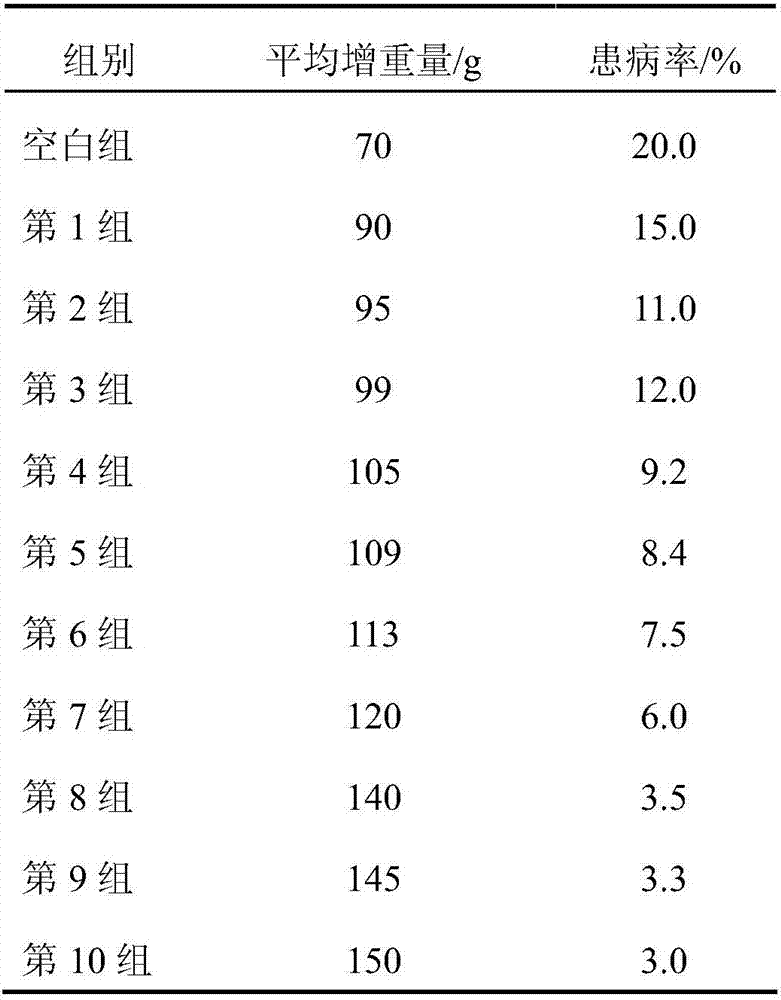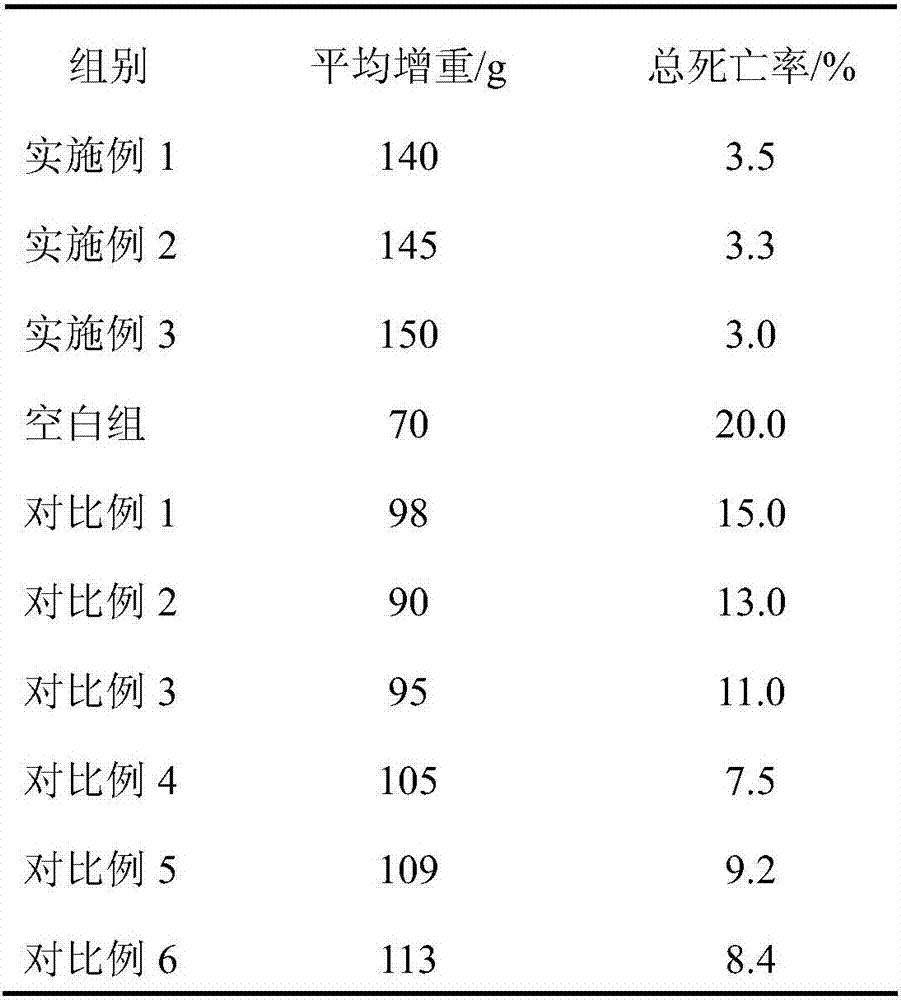Culture method of rice fragrance grass carp
A breeding method and grass carp technology, applied in fish farming, climate change adaptation, animal feed, etc., can solve problems such as improper application of pesticides and fertilizers, unreasonable fish stocking density, fish death and fish quality, etc., and achieve the purpose of suppressing harmful Bacterial growth, improve immunity and disease resistance, increase the effect of nutrients
- Summary
- Abstract
- Description
- Claims
- Application Information
AI Technical Summary
Problems solved by technology
Method used
Image
Examples
Embodiment 1
[0056] 1. Preparation of Feed and Feed Additives
[0057] 1. Feed preparation:
[0058] The feed is mainly made of the following raw materials in parts by weight: 15 parts of poplar leaves, 15 parts of Chinese tallow leaves, 13 parts of water peanuts, 13 parts of green vegetables, 10 parts of day lily, 12 parts of goosegrass, 15 parts of mountain horse vegetables, and 15 parts of Chinese cabbage , 17 parts of gray vegetables, 15 parts of Sudan grass, 17 parts of citronella grass, 10 parts of sugar beet, 8 parts of silkworm chrysalis, 8 parts of corn flour, 10 parts of earthworm powder and mixed with lactic acid bacteria, yeast, photosynthetic bacteria and bacillus in equal weight ratio 1 part of the microorganism formed.
[0059] The above-mentioned ratio is expected to be prepared into feed using the following method, which specifically includes the following steps:
[0060] (1) Wash fresh poplar leaves, tallow leaves, water peanuts, green vegetables, day lily, duck tongue ...
Embodiment 2
[0078] 1. Preparation of Feed and Feed Additives
[0079] 1. Feed preparation:
[0080] The feed is mainly made of the following raw materials in parts by weight: 16 parts of poplar leaves, 16 parts of tallow leaves, 14 parts of water peanuts, 14 parts of green vegetables, 13 parts of day lily, 13 parts of goosegrass, 16 parts of mountain horse vegetables, and 16 parts of Chinese cabbage , 18 parts of gray vegetables, 16 parts of sudan grass, 18 parts of citronella grass, 11 parts of sugar beet, 9 parts of silkworm chrysalis, 9 parts of corn flour, 11 parts of earthworm powder and mixed with lactic acid bacteria, yeast, photosynthetic bacteria and bacillus in equal weight ratio 1.5 parts of microorganisms formed.
[0081] The above-mentioned ratio is expected to be prepared into feed using the following method, which specifically includes the following steps:
[0082] (1) Wash fresh poplar leaves, Chinese tallow leaves, water peanuts, green vegetables, day lily, duck tongue ...
Embodiment 3
[0101] 1. Preparation of Feed and Feed Additives
[0102] 1. Feed preparation:
[0103] The feed is mainly made of the following raw materials in parts by weight: 17 parts of poplar leaves, 17 parts of tallow leaves, 15 parts of water peanuts, 15 parts of green vegetables, 15 parts of day lily, 14 parts of goosegrass, 17 parts of mountain horse vegetables, and 17 parts of Chinese cabbage , 20 parts of gray vegetable, 17 parts of sudan grass, 20 parts of citronella, 12 parts of beet, 8 parts of soybean, 10 parts of silkworm chrysalis, 10 parts of corn flour, 12 parts of earthworm powder and lactic acid bacteria, yeast and photosynthetic bacteria in equal weight ratio , Bacillus mixed with 2 parts of microorganisms.
[0104] The above-mentioned ratio is expected to be prepared into a feed additive by the following method, which specifically includes the following steps:
[0105] (1) Wash fresh poplar leaves, Chinese tallow leaves, water peanuts, green vegetables, day lily, duc...
PUM
 Login to View More
Login to View More Abstract
Description
Claims
Application Information
 Login to View More
Login to View More - R&D
- Intellectual Property
- Life Sciences
- Materials
- Tech Scout
- Unparalleled Data Quality
- Higher Quality Content
- 60% Fewer Hallucinations
Browse by: Latest US Patents, China's latest patents, Technical Efficacy Thesaurus, Application Domain, Technology Topic, Popular Technical Reports.
© 2025 PatSnap. All rights reserved.Legal|Privacy policy|Modern Slavery Act Transparency Statement|Sitemap|About US| Contact US: help@patsnap.com


